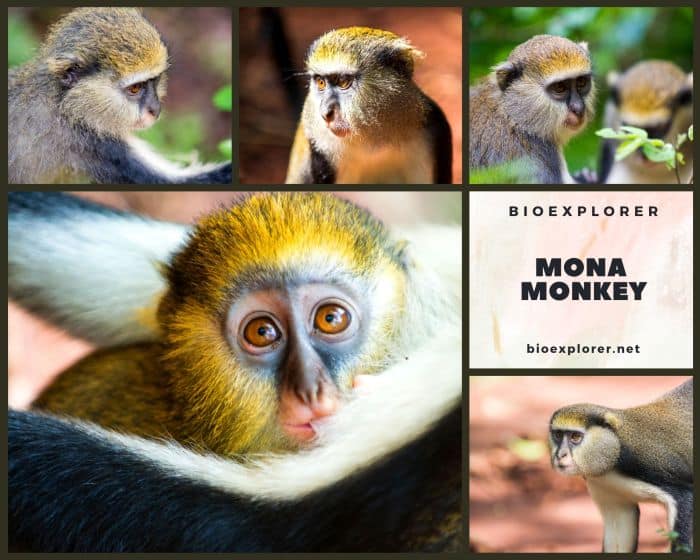
| Animalia | Primates | Cercopithecidae | Cercopithecus | Cercopithecus mona |
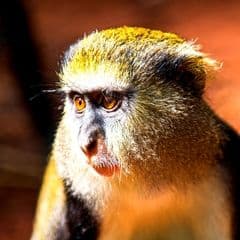

- Common Name: Mona Monkey
- Taxonomy Classification Year: 1775
- Monkey Size: 41 to 63 cm (16 to 25 in)
- Skin Color(s): Green, Red-brown to brown-agouti
- Habitat: Forest, rainforest
- Diet: Omnivorous
- Native Countries: Cameroon, Ghana
Mona Monkey Distribution
Mona Monkey Characteristics

The Mona monkey[1] (Cercopithecus mona) is an Old World monkey living between Cameroon and Ghana in West Africa.
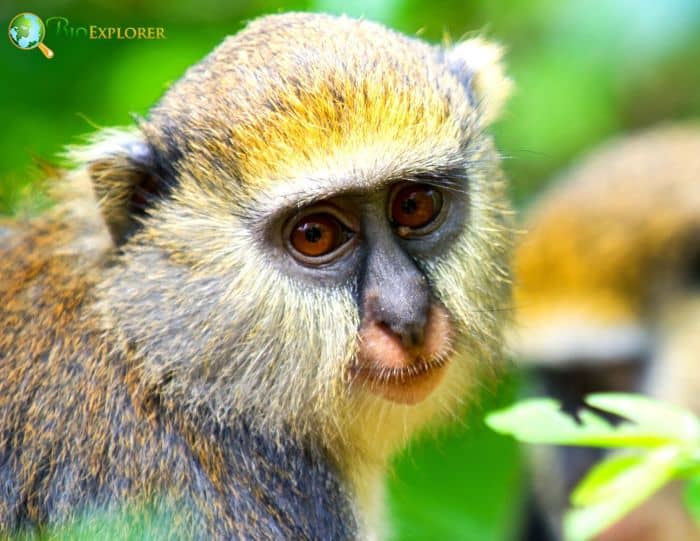
- Individuals in this species are colorful. The back fur is reddish brown to agouti brown.
- The ventral surface and buttocks are white. The upper half of the face is bluish-gray with a white stripe on the forehead.
- The eyebrows are dark, and the muzzle is pink. Around the face, the hair is yellow, with a dark band running from the eyes to the ears.
- The cheeks are grayish-yellow, and the lips are white. Other notable features include long, thick legs and long white tufts on the ears.
- The tail is almost black above and gray below. The tip of the tail is black.
Suggested Reading: Campbell’s Mona Monkey
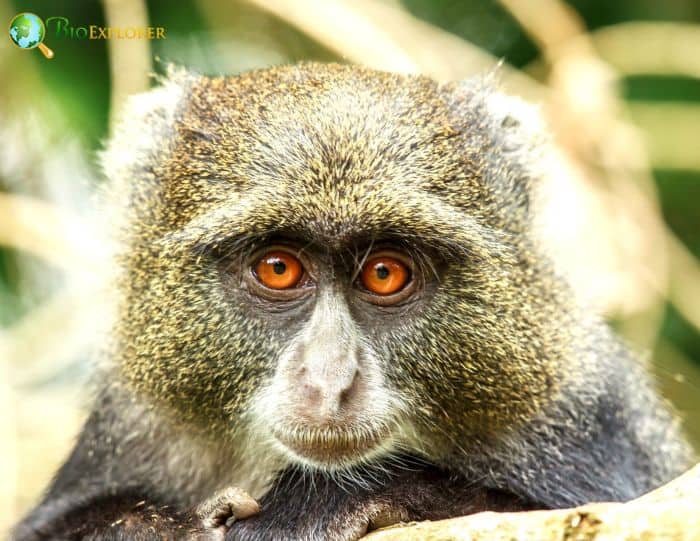
What Do Mona Monkeys Eat?
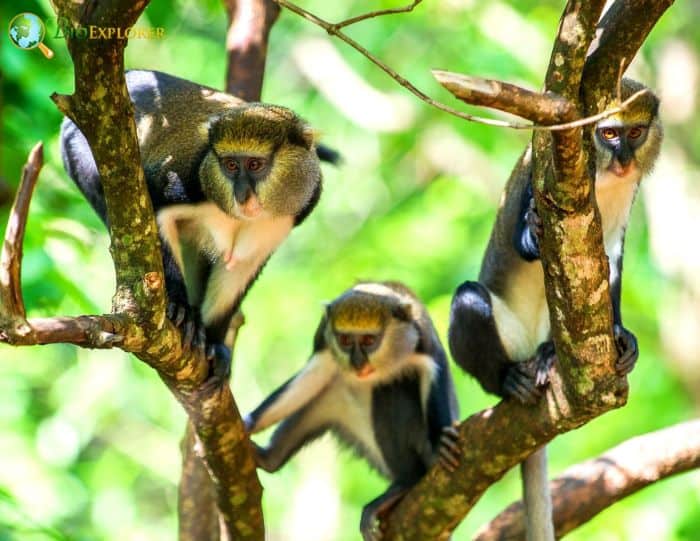
The Mona Monkey feeds on Persimmons (Diospyros), Umbrella Tree (Musanga cecropioides) and African Nutmeg (Pycnanthus angolensis)[¶].
Mona Monkey Facts
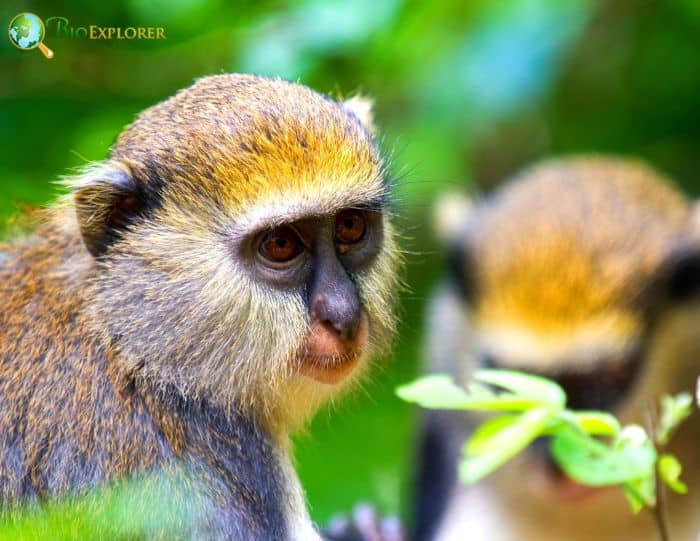
- Mona monkeys live in large groups of 5 to 50 individuals.
- They are very social and active. Mona monkeys are diurnal and are mainly active in the early morning or late afternoon.
- They “fly” across trees by running to the far end of a branch and jumping onto another branch.
- When they sense they are in danger, they freeze and remain silent until the danger has passed.
- These monkeys are known for being loud and boisterous, with calls that sound like expressive moans.
Suggested Reading: Monkey Representative Species
Cite This Page
APA7MLA8Chicago
BioExplorer.net. (2025, December 19). Mona Monkey. Bio Explorer. https://www.bioexplorer.net/animals/mammals/monkeys/mona-monkey/.
BioExplorer.net. "Mona Monkey" Bio Explorer, 19 December 2025, https://www.bioexplorer.net/animals/mammals/monkeys/mona-monkey/.
BioExplorer.net. "Mona Monkey" Bio Explorer, December 19 2025. https://www.bioexplorer.net/animals/mammals/monkeys/mona-monkey/.











